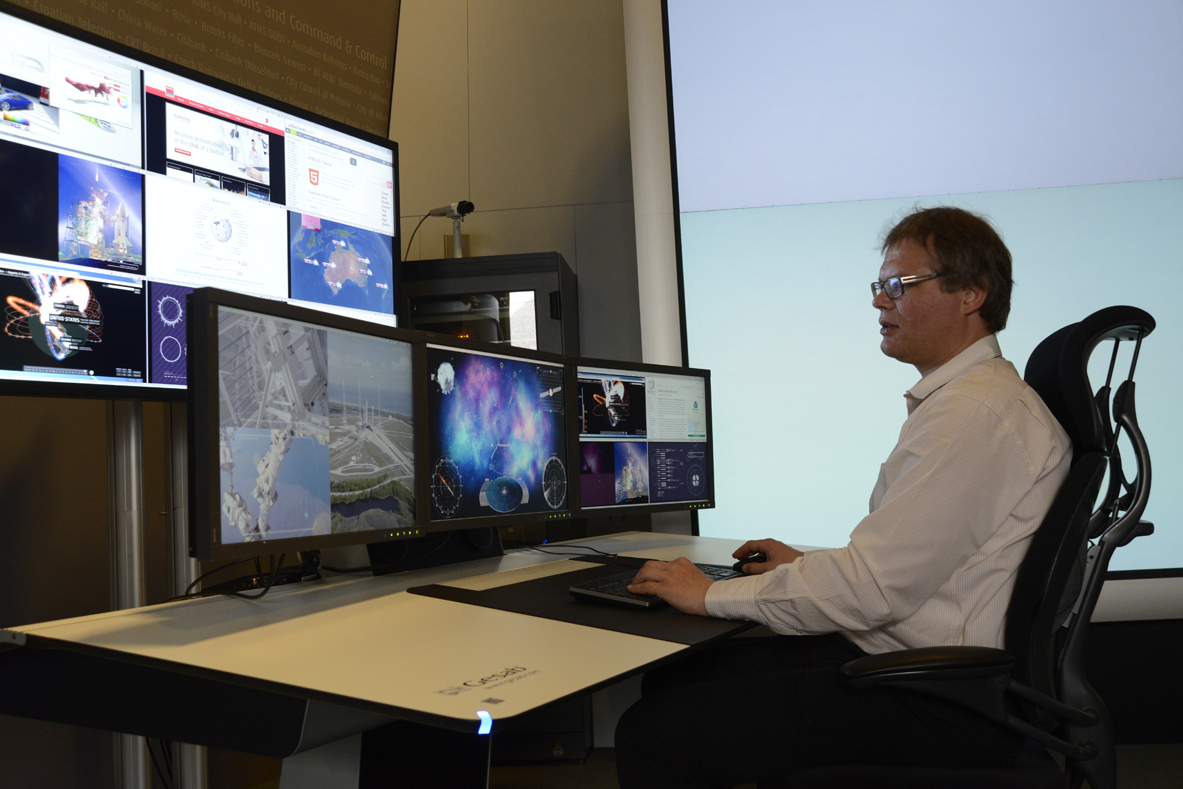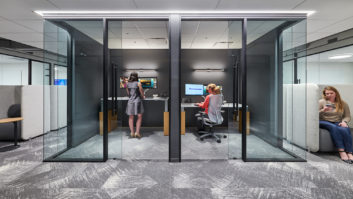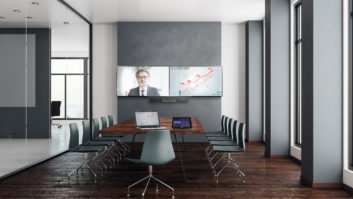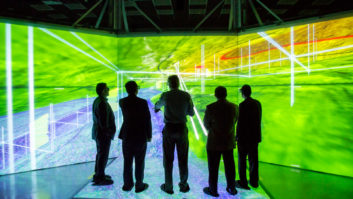
In the first half of this feature we revealed how the new ‘operator-centric’ approach is impacting the control room environment, here Duncan Proctor considers the security issues as well as how the new model translates into opportunities for integrators.
With increased functionality, there are additional security concerns, as Matrox’s Recine explains: “There is a greater emphasis on security today now that IP-based products are flooding into the control room to replace legacy architectures. But knowledge is power, and control room managers are finding out that existing facilities are less secure than they thought and that there are products and services that exist to meet the exacting safety standards of the most demanding control room environments using even the latest in high-density AV-over-IP-capable products.”
On the subject of IP, Eric Hénrique, general manager at VuWall Technology Europe, affirms: “The movement towards IP will change the solutions required. IoT and big data will make it necessary to control, distribute and manage much more information. The daily work of a control room operator is working with software, therefore there is a need to have a powerful control software with which it is possible to control, distribute and manage all the connected systems and it has to be easy to implement, to operate and to be maintained.”
With this increasing tendency to design the system around the operator, does this mean the days of the central videowall are numbered? Peter van Dijk, senior business development manager for export at Mitsubishi Electric, points out: “There are situations where an individual operator needs to focus on a particular set of data or task, but there still remains no better way for a team of people to gain the all-important high-level overview of a situation than a large screen collaborative display, be that DLP cubes or tiled LCD.”
He finds agreement with Nicolas Jaud, product marketing manager, Aten UK: “Videowalls will continue to play an important role in visualisation integration and information exchange, providing an overview to control room staff and, especially, to decision makers.”
For Jamie Adkin, VP sales EMEA at Adder Technology, the operator-centric model will lead to changes: “There are three key changes that we as technology manufacturers need to consider as we move towards an operator-centric approach. Firstly, operators continue to be presented with increasing amounts of data, video and analytics; secondly, operators are increasingly more familiar with technology and interactive tools; thirdly, operators are looking for more autonomy in the way they carry out their work albeit within the guidelines and boundaries set out by their organisation and authorities.”
Implications
The promotion of this model is an evolutionally rather than revolutionary step, but it will still have a significant impact on vendors across the industry and the sector itself.
“Previously there was just a single videowall with a single processor,” says Bob Ehlers, VP business development, RGB Spectrum. “Modern control rooms now require processors capable of supporting multiple videowalls as well as video distribution to operator desktops and locations. A cohesive architecture for comprehensive display and control is required.”
Barco is prepared: “We have seen this shift coming and have been developing solutions that focus on operator efficiency and effectiveness,” says Suchit Rout, strategic alliances and business development manager at Barco. “In this way, we can adequately arm our integrator partners with the highest-value and lowest-risk technology systems for deploying state-of-the-art collaborative decision making units in control rooms.
So is Matrox, as Recine comments: “We’re deeply involved at the tip of the spear. We’ve been working on this evolution for years and we have migrated all of our main product lines to work over low-bitrate IP without compromising on performance or quality. As far as other manufacturers, the lines are blurring between what is competition and what is a hardware or software we can connect to. Matrox is deeply passionate about using real standards-based technologies. This makes us highly interoperable with our peers.”
Integrator opportunities
All of this translates to a number of opportunities for integrators, but not without challenges, as Jaud outlines: “SIs (systems integrators) need to focus more on the integration of AV and IT technologies to meet the expanding requirements. Solutions have to not only now be more flexible and scalable, but also take into account the ergonomic factors that are the key to improving operator efficiency and minimising errors – the human factor is becoming paramount.
“The main opportunities for integrators are to do with the expanding possibilities and advantages that come with delivering more flexible, more scalable, and much larger-scale control room solutions. Because the frontier between AV and IT installations is getting thinner and thinner, the way that technologies developed for the IT world are now being implemented for AV projects opens up a whole world of new opportunities for the SI to expand their activity in both directions.”
Rout at Barco comments: “The growing complexity of control room infrastructure also provides additional opportunities. There is no one-solution-fits-all approach anymore: every aspect of the operator’s situation needs to be carefully evaluated, and considered when designing a solution. The integrator plays a key role in this, advising the customer about the right solution, but also by considering possible future upgrades and expansions.”
Van Dijk also sees obstacles alongside the opportunities. He says: “The challenge facing integrators is designing systems that can cope with increasing amounts of data and structure it in a meaningful way, giving operators the tools to oversee and manage effectively.
“The key to success in today’s command and control display business is versatility. More often than not, integrators need to incorporate their solution into an existing infrastructure and this may present particular technical challenges when dealing with older systems – remember that control rooms typically have planned operational lifespans of 10 or 20 years. It is the technical expertise of the integrator in effectively bringing together all these components and technologies that adds value to the project, and I think it’s here that the opportunities chiefly exist.”
RGB’s Ehlers believes the opportunities are not confined to technology specification and installation: “Integrators need to look beyond just AV and understand the application, workflow, and interdependencies of the operators and supervisors in a control room. Integrators can help define best practices regarding business process workflow for end users.
“The convergence of IT and AV is nowhere more evident than in the modern control room. Integrators with skills in both areas will thrive.”
www.adder.com
www.aten.co.uk
www.barco.com
www.matrox.com
www.mitsubishielectric.com
www.rgb.com
www.vuwall.com







